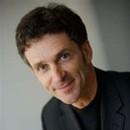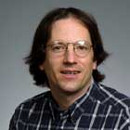[cjtoolbox name=”Paper Kit – JS”][/cjtoolbox]

Abstract: Medical image computing opens a new realm of possibility for improving modern medicine. It aims at creating, from medical images, a personalized digital representation of the patient useful for guiding diagnosis, prognosis, and therapy. To reach this goal and to extract pertinent anatomical and physiological information, new image-analysis algorithms must be designed, based on dedicated mathematical, physical, and biological models of the human body at multiple scales. This talk will illustrate some of the recent advances in this challenging young research field at the intersection of image processing, computational sciences, and medicine.
Nicholas Ayache is a Research Director at INRIA, the French Research Institute of Computer Science and Applied Mathematics, where he leads the ASCLEPIOS project team in Sophia Antipolis. His current research interests include the analysis and simulation of biomedical images with advanced geometrical, statistical, biophysical, and functional models, as well as the application of these tools to medicine to improve the diagnosis and therapy of diseases. His publications have received over 20,000 citations. In 2008, he received the “Microsoft Award for Science in Europe” awarded jointly by the Royal Society and the French Academy of Sciences. In 2012, he was awarded an ERC advanced grant by the European Research Council for the analysis of dynamic medical images (MedYMA 2012–2017). In 2013, he received the 2013 Miccai Enduring Impact Award in Nagoya, Japan. For the academic year 2013–2014, he was elected a professor at the Collège de France in the Chair Informatics and Computational Sciences. He has also been a scientific consultant for several industrial companies or international research institutes, and has been a co-founder of five start-up companies in image processing, computer vision, and biomedical imaging.

Abstract: I will describe two projects that reveal hidden images from video sequences. The first is motion magnification. By transforming images into a representation wherein local phase is encoded explicitly, we can apply simple signal-processing steps to exaggerate small motions, creating a “motion microscope.” We believe this has many applications, and I will show motion-magnified flows, fractures, pipes, cranes, cars, and people (singing, breathing, and balancing). Described is work done jointly with Michael Rubinstein, Neal Wadhwa, and Fredo Durand (website). The second project addresses the “accidental images” formed by naturally occuring pinhole and pinspeck cameras. I will describe how these occur, and show how video processing can sometimes reveal images outside the frame of the camera. Described is work done jointly with Antonio Torralba (website).
William T. Freeman is Professor and Associate Department Head of the Department of Electrical Engineering and Computer Science at MIT, having joined the faculty in 2001. His current research interests include motion re-rendering, computational photography, and learning for vision. He received outstanding-paper awards at computer-vision or machine-learning conferences in 1997, 2006, 2009 and 2012, and “test of time” awards in 2013 for papers from 1991 and 1995. Previous research topics include learning low-level vision, steerable filters and pyramids, color constancy, bilinear models for separating style and content, and belief propagation in networks with loops. He holds 30 patents. He is active in the program or organizing committees of computer vision, graphics, and machine-learning conferences and was program co-chair for ICCV 2005 and CVPR 2013.

Abstract: Correlation mining is a class of methods for extracting complex patterns from massive multivariate datasets, such as spatio-temporal data and images. Many operations on such datasets depend on computing a large number of correlations, including linear prediction, texture analysis, region-growing segmentation, and Gauss Markov random-field modeling. In this talk, I will present emerging mehods of correlation mining for massive datasets, discuss the underlying mathematical theory, and illustrate their application to several imaging and multidimensional signal-processing applications.
Alfred O. Hero III received the B.S. (summa cum laude) from Boston University (1980) and the Ph.D. from Princeton University (1984), both in Electrical Engineering. Since 1984 he has been with the University of Michigan, Ann Arbor, where he is the R. Jamison and Betty Williams Professor of Engineering. His primary appointment is in the Department of Electrical Engineering and Computer Science, and he also has appointments, by courtesy, in the Department of Biomedical Engineering and the Department of Statistics. From 2008–2013, he has held the Digiteo Chaire d’Excellence at the École Supérieure d’Électricité, Gif-sur-Yvette, France. He is a Fellow of the IEEE, and several of his research articles have received best-paper awards. He was awarded the University of Michigan Distinguished Faculty Achievement Award (2011). He received the IEEE Signal Processing Society Meritorious Service Award (1998), the IEEE Third Millenium Medal (2000), and the IEEE Signal Processing Society Technical Achievement Award (2014). He was President of the IEEE Signal Processing Society (2006–2008) and was on the Board of Directors of the IEEE (2009–2011) where he served as Director of Division IX (Signals and Applications).

Pingback: Plenary Speakers announced | IEEE International Conference on Image Processing